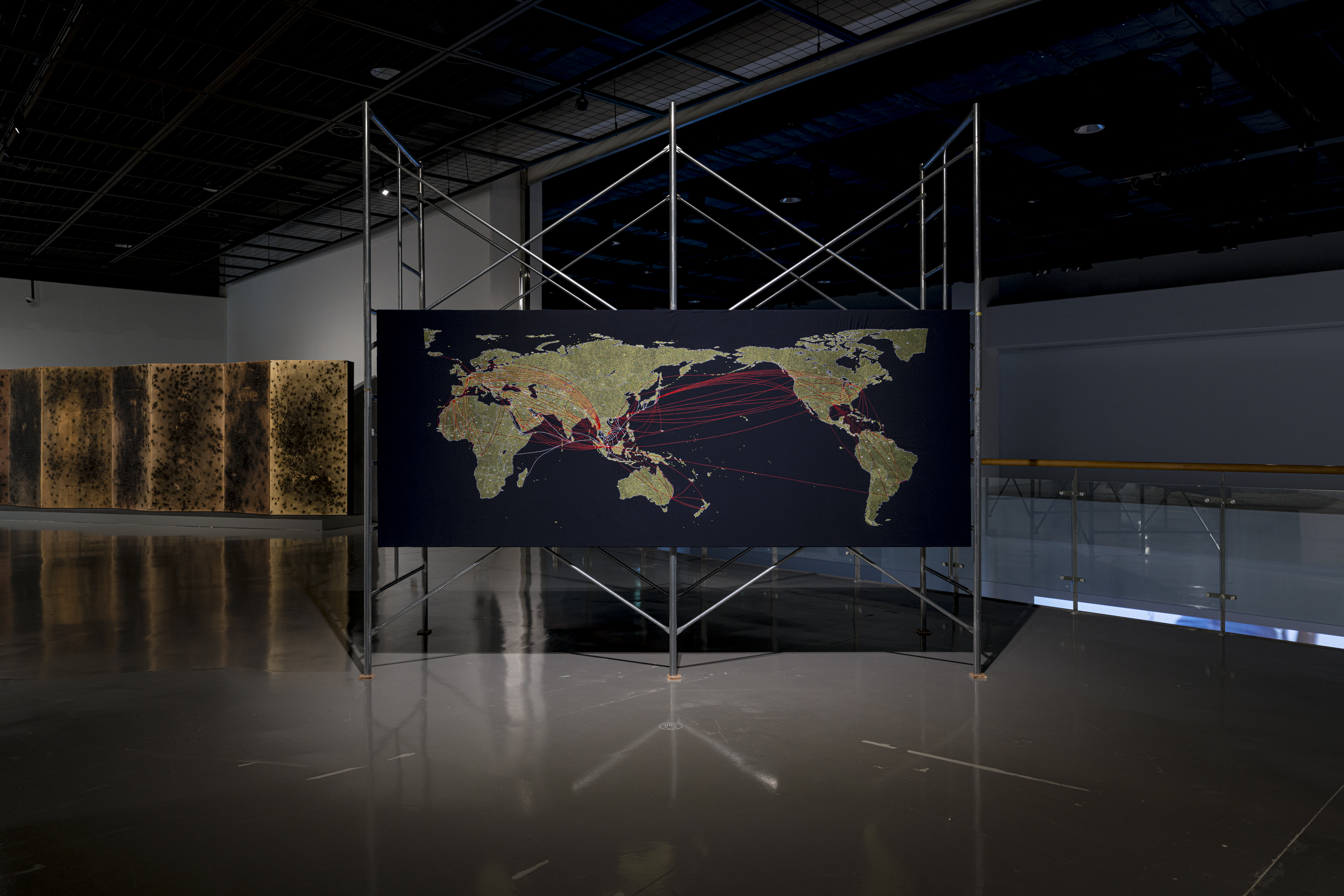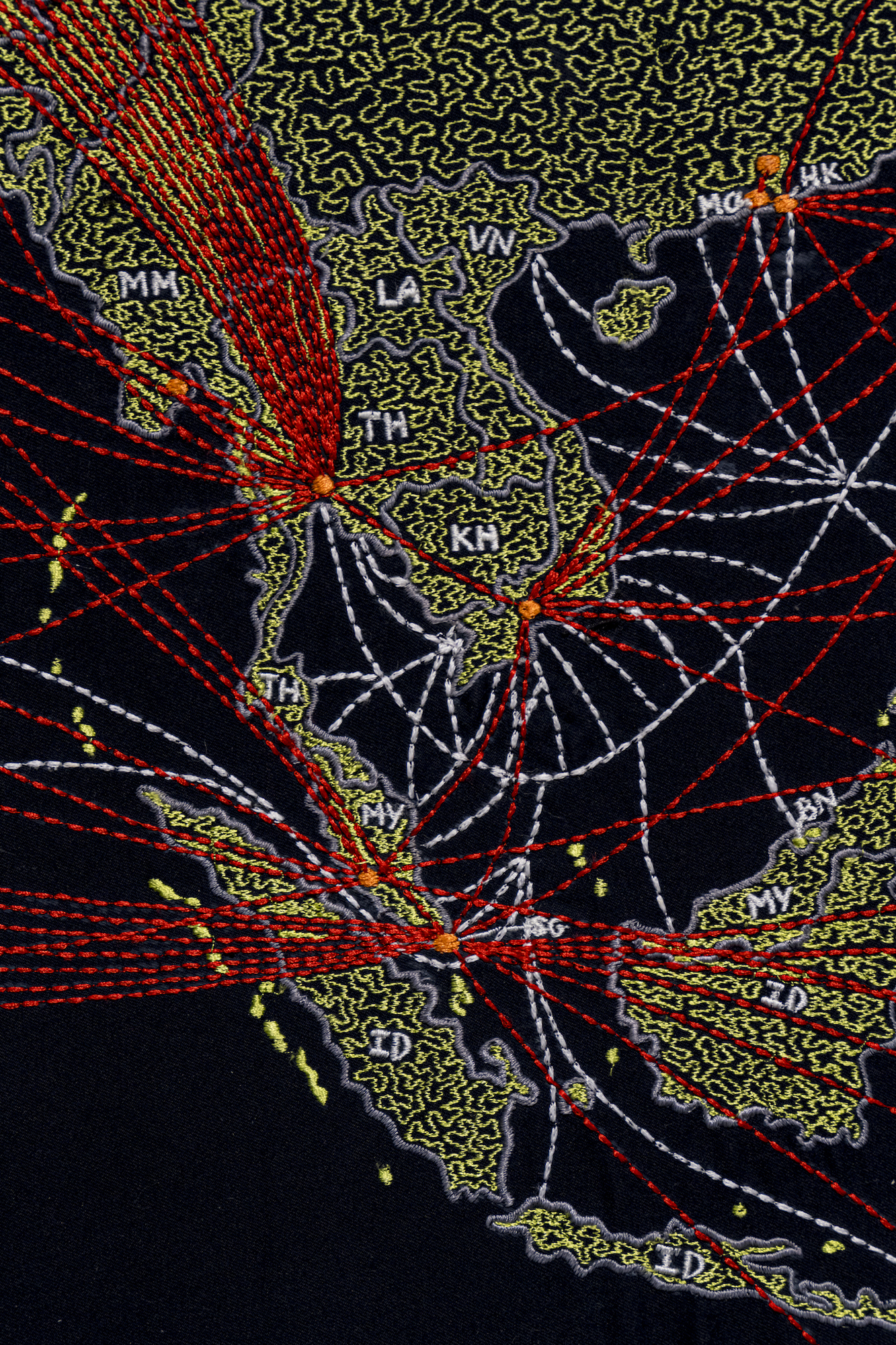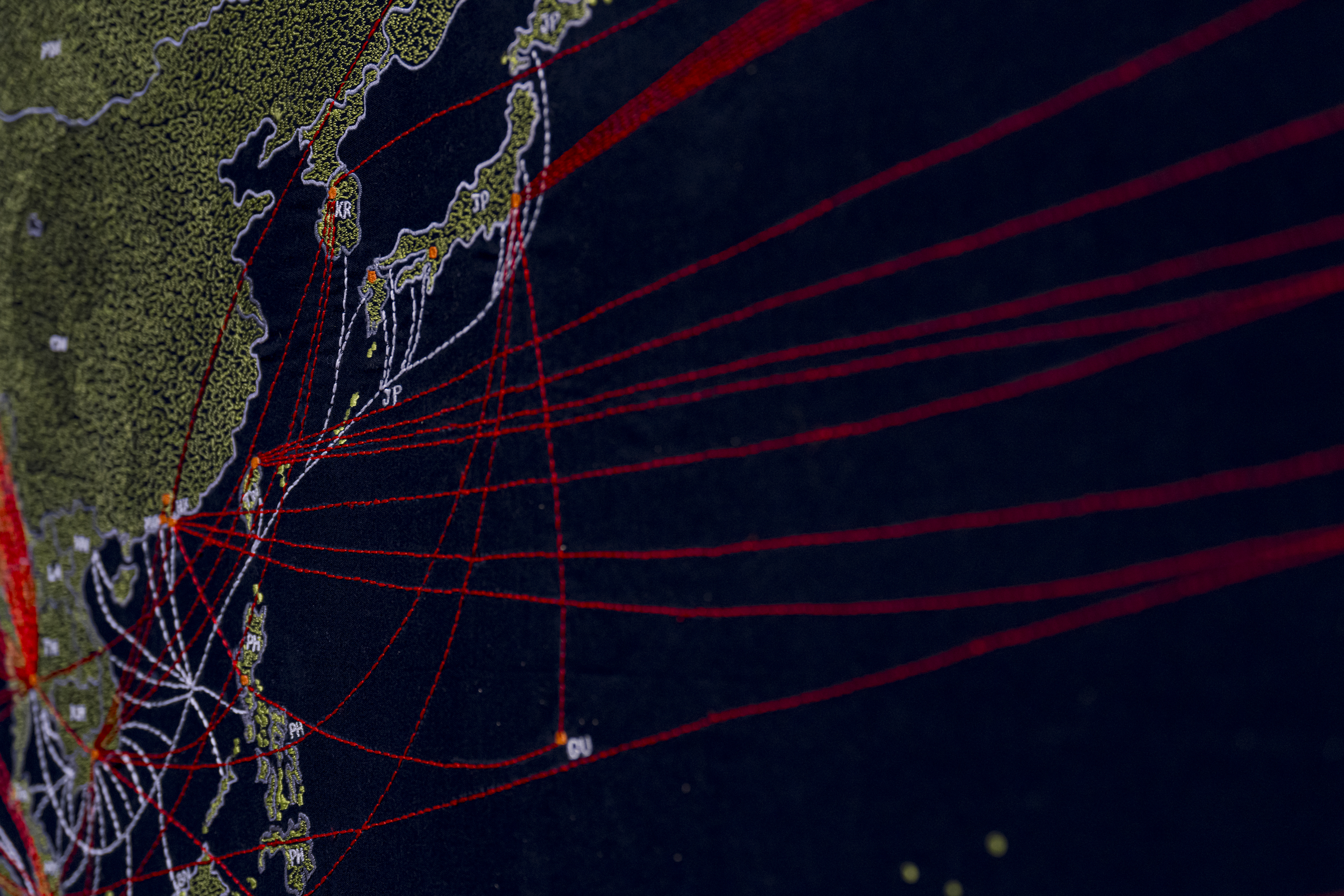Pleased to share Tiffany Chung’s participation of “This is Not Just Local: Tactical Practices” at Busan Museum of Contemporary Art, showing Reconstructing an Exodus History: Boat Trajectories from Vietnam and Flight Routes from Refugee Camps and of ODP Cases (2020).
These days, regions are said to be threatened with destruction. This exhibition focuses on the hierarchies at play in the use of words like “region” and “local,” as well as the dynamics behind the desire to divide things into a center and a periphery, presenting work in terms of “locality” as an alternative that harbors more multifaceted meanings. Here, locality is observed beyond superficial analyses driven by the state-centered paradigm. Going beyond the geographic sense of “local,” we examine the footsteps people leave behind as evidence of us living in the present day.
The exhibition employs a variety of tactics to share the everyday practices that individuals have adopted, starting with the very ground on which we stand. Words like “strategy” and “tactics” are often associated with warfare, but explained here in ways that differ from their conventional usage. A strategy is essentially a plan exerted by a subject with a desire for power. A tactic, in contrast, is an approach that conforms to existing institutions and discourses while also taking advantage of their gaps and blind spots. It refers to acts of departure and subversion—reorienting assigned cultural structures, the absence of inherent positions, and techniques used by the weak to triumph over the strong. When presenting experience, encounters, and solidarity as forms of shared practice, we cannot limit this to any one realm. Based on the conclusion that locality cannot be defined in terms of any single voice, the exhibition This Is Not Just Local: Tactical Practices presents seven different tactics:
1. Strategic point_the rumored spot 2. Embodied memory 3. Network into the future 4. That Always Habitual Scenery 5. Anxiety–Coordination–Coexistence 6. Sense of Boundaries 7. Polyphonic speaking Tactics function in fragmentary ways, but they also cautiously exploit the gaps left behind by particular states of affairs. They are forms of practice that constantly adapt to change, operating in a momentary sense while closely observing a lasting reality.
This Is Not Just Local: Tactical Practices presents the relationships that practices form with narratives, along with evidence of the imbalances that exist between ordinary tactics and strategies. Actions like residing, traveling, dancing, speaking, reading, and cooking correspond to the characteristics of stratagems and tactical ambushes. Michel de Certeau once said that the first map was, but a kind of walking diary—a record of the practice of space. Yet as this experience became abstracted and was transposed into schematic form, social space ultimately diminished into a controllable, composed surface level. This exhibition captures that which exists evoked by mention of Busan: the experiences, zeitgeists, histories, memories, relationships, environments, and futures. Rather, it takes an agile stance as it attempts to intervene, to appropriate, to occupy and transform.
— Courtesy of Busan Museum of Contemporary Art.
This is Not Just Local: Tactical Practices Tiffany Chung

Embroidery on fabric
140 x 350 cm
Courtesy of Busan Museum of Contemporary Art
Photo: Studio Jeongbiso

Embroidery on fabric
140 x 350 cm
Courtesy of Busan Museum of Contemporary Art
Photo: Studio Jeongbiso

Embroidery on fabric
140 x 350 cm
Courtesy of Busan Museum of Contemporary Art
Photo: Studio Jeongbiso

Embroidery on fabric
140 x 350 cm
Courtesy of Busan Museum of Contemporary Art
Photo: Studio Jeongbiso